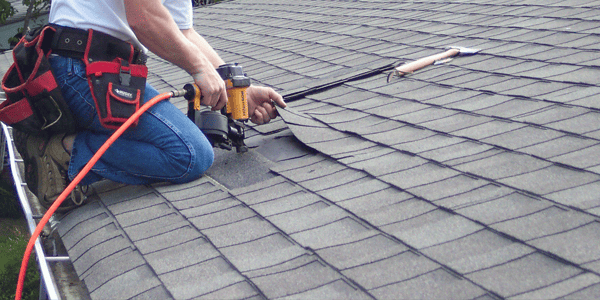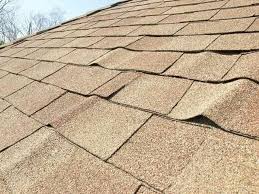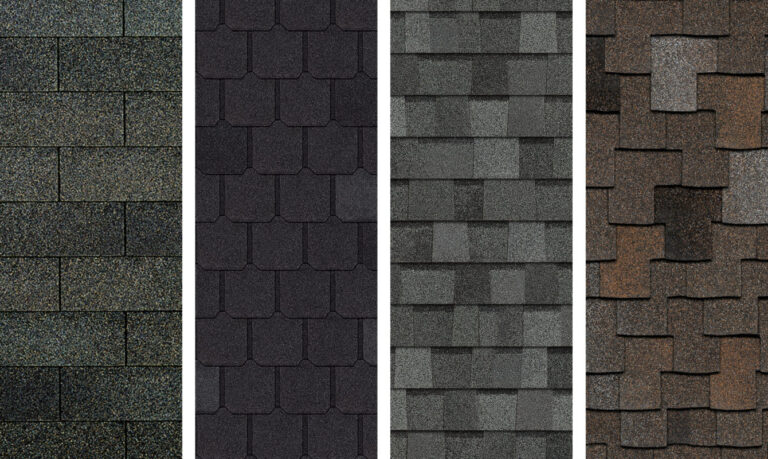Like most homeowners, you will eventually have to deal with roof storm damage. This damage can occur as a cumulative effect of exposure to the elements or suddenly during a relentless weather event. It can be subtle and hard to notice, like small dents caused by hail, or it can be as obvious as a fallen tree that’s knocked off a bunch of shingles.
When disaster strikes, you’ll need to know what to do when roof damage happens. In this article, we’ll walk you through the steps of dealing with roof storm damage.
What Exactly Does Storm Damage Look Like?
Technically speaking, the first thing you’ll need to do when there’s roof damage caused by a storm is call your insurance company. However, it’s essential that you’re able to assess the potential roof damage so you can be on the same page as the insurance adjuster — and file your claim correctly to ensure the best possible outcome.
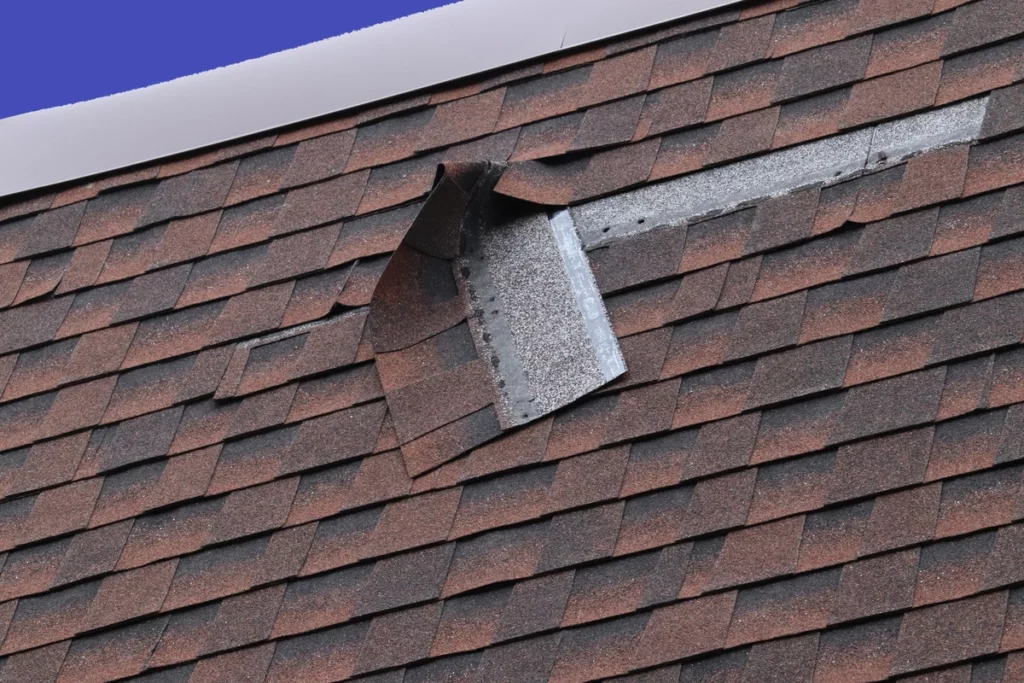
So, what does roof storm damage look like? It can be anything from water spots on the ceiling to curled or missing shingles. Here’s what to look for:
- Shingle condition: Missing shingles are one of the more obvious signs of storm roof damage. However, the less noticeable signs lie within the granules. You’ll want to check for granule loss on your asphalt shingles as well as dings and dents — especially after a hail storm.
- Missing or broken flashing: Roof flashing is designed to lead water away from critical areas of your roof. It’s typically made from galvanized steel and is very thin. Over time it can weaken, making it vulnerable to severe storms that can cause nails to lift and pieces to go missing.
- Loose or peeling sealant: Various types of polyurethane sealant are also used to secure your roof’s flashing during installation. Over time, the sealant weakens due to the elements and heavy storms can cause it to come loose or deteriorate. It can be difficult to spot sealant damage from far away, so if you notice missing or broken flashing, it’s a safe bet that the sealant is also damaged.
- Water damage: Water damage from a leaky roof can occur in your attic, access space, or along the ceiling. If the damage is severe, you’ll likely see it on your walls as well, and it usually takes the form of yellowish or brown stains.
- Debris: Heavy winds mixed with pouring rain can cause debris to gather on your roof. The larger the debris that blows on or across your roof, the greater the chance of shingle damage or other damages. You may not be able to see the damage from the ground, especially if it’s underneath a pile of debris, but it’s something you’ll want to take note of to be safe.
What to Do When There’s Roof Storm Damage
When you notice the signs of damage to your roof after a storm, there are a few important steps you’ll need to take if you want your homeowner’s insurance to foot the bill for the repairs. Keep in mind that while it’s important to know what storm damage to your roof looks like, it’s not recommended that you climb up there and walk around on your own, as it can be incredibly dangerous.
Here’s what you’ll need to do:
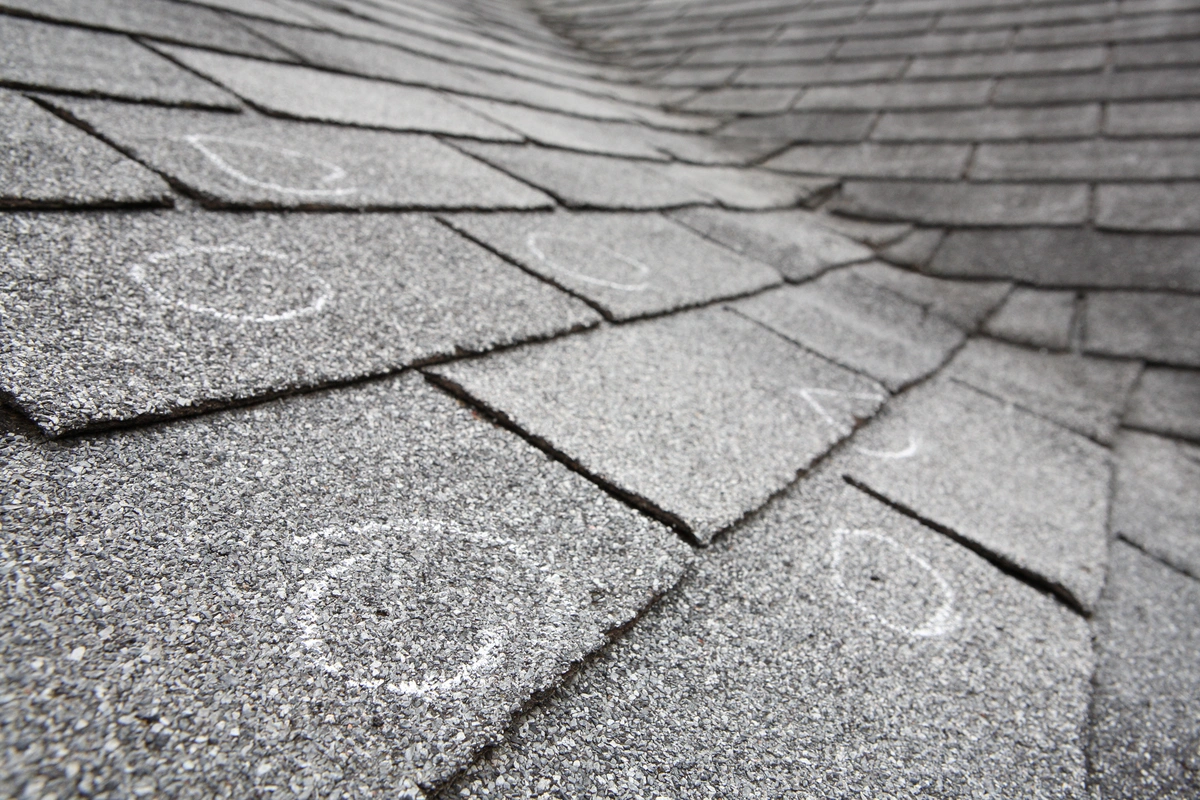
1. Call Your Homeowners Insurance Company
Even if you aren’t sure that there’s actual damage to your roof after a storm, you’ll still want to call your homeowners insurance company immediately. Upon calling, you’ll need to give them as much information as possible regarding the potential damage that you do see. It’s also a good idea to ask the insurance agent exactly what’s covered in your policy so you can prepare yourself financially.
From there, your insurance agent will have you file a claim for the damages and give you a time frame to submit it. For most homeowner’s insurance claims, you’ll need to include the following documentation:
- Photos of the damage
- Receipts for any work done
- A copy of the estimate given by your roofing contractor
- An itemized list of belongings lost due to the damage and their current value
Depending on the severity of the damages, you may be advised to have repairs made immediately. This is known as “stopgap work,” and you’ll likely have to cover the costs out of pocket and file for a reimbursement claim.
2. Get Ready for the Insurance Adjuster
The insurance company will assign an adjuster to your case to assess the roof damage and verify your claim. Except for emergency situations, it’s best not to touch anything on the roof so the adjuster can get the whole picture to accurately report their findings.
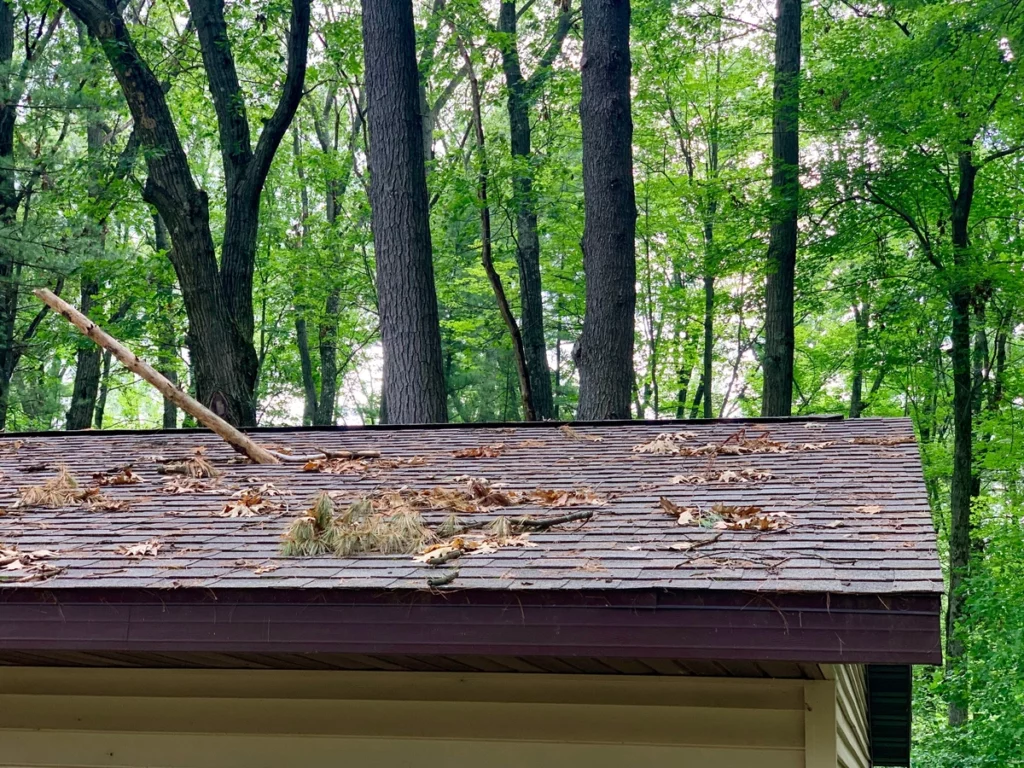
You can expect the adjuster to take photos of the damages and provide you with an estimate of what your policy will cover. They’ll provide you with a copy of their report, along with the photos and estimate.
3. Get in Touch With a Local Roofing Company to Assess the Damage
The next step is to find a reliable roofing contractor that can come and assess the storm damage. This is a crucial step as adjusters sometimes make mistakes. Your roofing contractor can advocate for you by providing photos of the damages they’ve found along with a detailed explanation of what those damages entail — along with a more accurate estimate for the cost of the work.
It should be noted, however, that the insurance adjuster is the only person that can officially approve your storm damage claim — and they must approve it before any work can be done.
A good roofing contractor understands this concept, and they’ll make sure you understand it as well. While they can’t guarantee that your claim will be approved, they’ll do what they can to support your case. In no way should they pressure you to enter into a work contract before the claim is approved.
Other Things to Keep in Mind When It Comes to Roof Storm Damage
While the above steps are very straightforward, there are several things you’ll want to keep in mind to ensure the entire process runs smoothly.
- You get to choose your contractor. Your insurance company is not permitted to tell you who you can or can not hire for the job. They also don’t usually give recommendations for local companies as their only job is to provide you with fair coverage for damages.
- Make sure you choose a roofing contractor that has experience working with insurance claims. This is very important because they’ll need to support your claim and advocate for you during the insurance process.
- Don’t “shop around” for the best price. Whether it’s a roof repair or a roof replacement, don’t waste your time comparing quotes. Your insurance company sets the price for your roof once your claim is approved, and your roofing contractor should be able to work within that budget. If not, you may be able to file for reimbursement down the road, and the contractor may offer financing plans to help you with any work that your insurance company won’t cover.
Choose Reliable Roofers for Your Storm Damage
When it comes to storm-damaged roofs, you want to work with a roofer that’s trustworthy and will help you in any way they can when it comes to dealing with your insurance company. While there’s no guarantee that your claim will be approved, a good roofing contractor will help you find the best solution for your roof storm damage.
Tidd’s Roofing is North Carolina’s first choice among homeowners for their roofing services. We can provide you with emergency patching services, and we’ll support you through the entire insurance process. Get in touch with us today to learn more!
